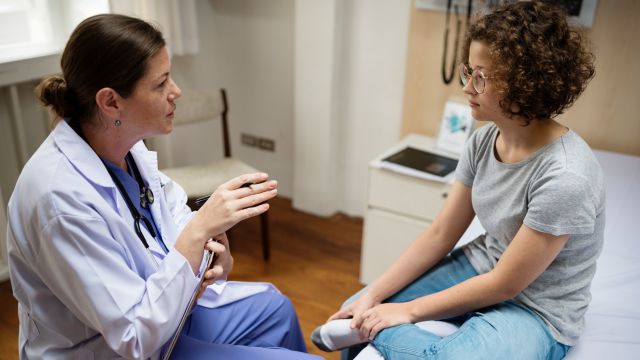Updated on November 15, 2022.
The chances are pretty good that you or someone you know is infected with the human papillomavirus (HPV), the most common sexually transmitted infection in the United States. The Centers for Disease Control and Prevention estimates that about 42.5 million Americans have HPV at any given time, most of them in their late teens and early 20s.
In some cases, HPV infection can contribute to potentially deadly illnesses. It leads to about 37,000 cases of cancer each year in both men and women.
Here’s what you need to know to protect yourself and your loved ones.
Understanding the virus
Rather than one specific virus, HPV is actually a group of more than 200 related viruses. More than 40 of them can be spread through direct sexual contact, whether vaginal, anal, or oral sex. Of these types of HPV, 14 strains are can lead to certain forms of cancer, including cancers of the cervix, vagina, penis, and anus as well as cancers of the head and neck. As a result, these viruses are considered high-risk strains. (Keep in mind, the HPV strains that cause skin warts around the genitals and anus typically don’t go on to cause cancer.)
Before you panic, know that HPV is so common that almost every sexually active person will get infected during their lifetime if they aren’t vaccinated, according to the CDC. About 90 percent of the time, HPV goes away within two years on its own.
But in some cases, it can linger and lead to cancer:
- Cervical cancer: Virtually all cases of this disease are caused by the HPV virus. Each year, roughly 13,000 women are diagnosed with cervical cancer and more than 4,000 die from the disease, according to the CDC.
- Throat cancer: It’s estimated that 2,300 women and 12,500 men are newly diagnosed with HPV-associated oropharyngeal cancers each year in the U.S., the CDC reports.
- Anal cancer: Every year in the U.S., about 6,900 people are diagnosed with anal cancer caused by HPV.
- Penile, vulvar, and vaginal cancer: Nearly 3,600 people are diagnosed with vulvar and vaginal cancers related to HPV annually in the United States, while an estimated 900 people are diagnosed with penile cancer.
Who’s at risk for HPV?
You’re at increased risk for HPV infection if you:
Have multiple sexual partners. The more partners you have, the more likely you are to be exposed to HPV. But even if you’re monogamous, you may be more susceptible if your partner has multiple sex partners.
Start having sex at a young age. The earlier you become sexually active, the more likely you are to come into contact with HPV.
Smoke. While smoking itself doesn’t raise risk for HPV, it appears to make it more likely that it will progress to cancer. Women who smoke, for example, are about twice as likely to develop cervical cancer as non-smokers, possibly because compounds in tobacco smoke damage the DNA of cervix cells. Smoking also makes it harder for the immune system to fight off HPV infections.
Signs of HPV
If you have the type of HPV that causes genital warts, you may see small cauliflower-like bumps on your vulva if you’re a woman or on your penis or scrotum if you’re a man. Warts can also crop up near your buttocks or in your throat if you’ve had oral sex. They don’t usually hurt, but they can itch.
Your healthcare provider (HCP) can prescribe topical treatments such as an immune-boosting cream or a plant-based application. Your provider can also remove growths by cutting them off, freezing them off—a procedure called cryotherapy—or destroying them with electric currents or lasers.
If you have the type of HPV that can cause cancer, there aren’t any symptoms until you begin to develop a disease such as throat or cervical cancer. That’s why taking steps to protect yourself and avoid getting HPV in the first place are so important. Here’s how:
Get vaccinated
It's recommended that everyone receive the two-dose HPV vaccine between the ages of 9 and 12. You may need a three-dose vaccination series if you get your first shot after your 15th birthday. Ideally, people should be vaccinated a few years before they become sexually active, so that they’re protected.
People who have not previously been vaccinated can also receive the vaccine up to age 26, but it’s worth noting that being vaccinated at older ages is less effective for lowering cancer risk. In special circumstances, an HCP may recommend receiving the vaccine up until age 45.
The HPV vaccine protects against nine strains of the virus, including seven of the most common cancer-causing types and the two responsible for genital warts. It could prevent more than 90 percent of related cancers from ever developing. It can also protect against infections that cause six types of cancer and help people avoid uncomfortable testing and treatment, according to the CDC.
Get screened
All women between the ages of 21 and 65 should be screened for cervical cancer. Women in their 20s should get a Pap smear every three years.
Women over the age of 30 have three options:
- A Pap smear every three years
- An HPV test every five years
- A combination HPV or Pap test every five years
You can stop screening after age 65 if you don’t have a history of moderate or severe abnormal cervical cells or cervical cancer and if you’ve had either three negative Pap tests in a row or two negative combination results within the previous ten years with the most recent one having been performed within the previous five years, according to the American College of Obstetricians and Gynecologists.
But while doctors can screen for cervical cancer, keep in mind that there aren’t screening tests for the other cancers caused by HPV infections. That’s why it’s so important to get the vaccine if you can.
Get condoms and use them
The only way to protect yourself 100 percent against HPV is to avoid sex completely. But that may not be a realistic option for most people.
If you’re not in a mutually monogamous relationship, your next best bet is to always use condoms, even if you’re on other methods of birth control such as an IUD or oral contraceptives. Just keep in mind that since HPV can infect areas not covered by condoms, they don’t offer complete protection.






